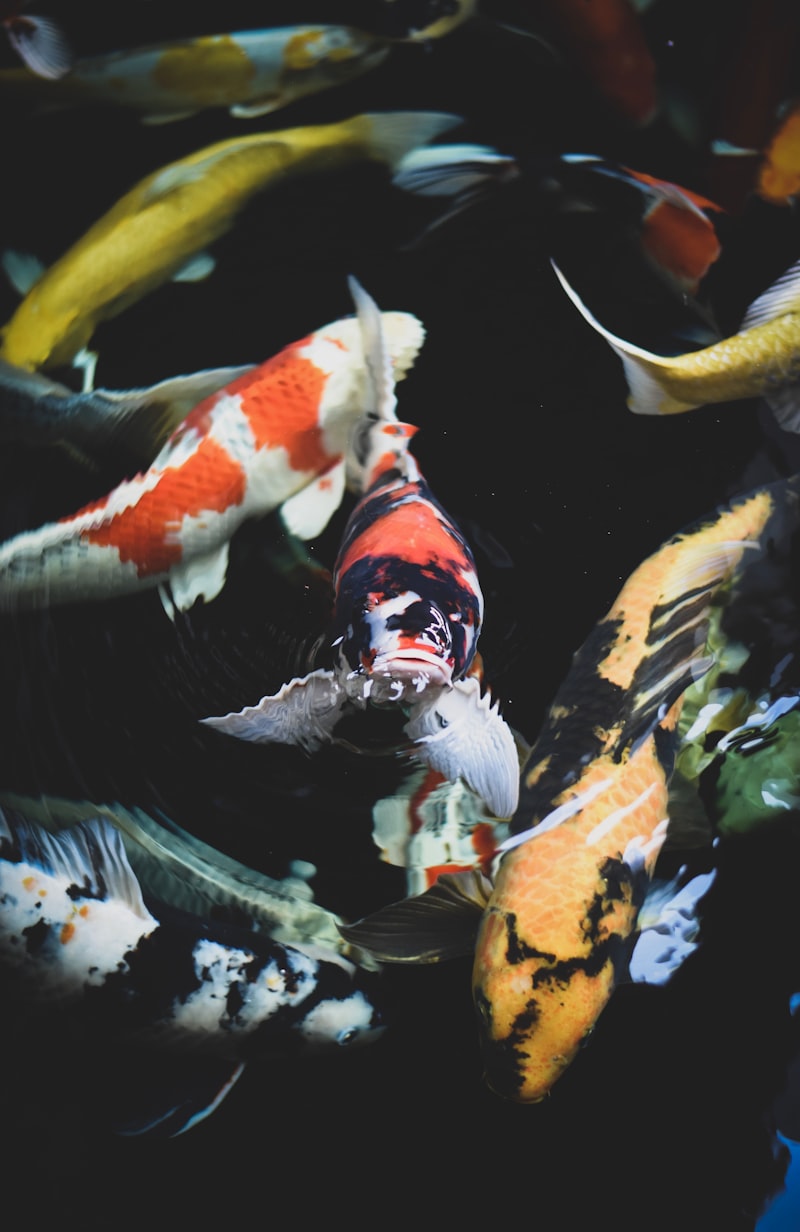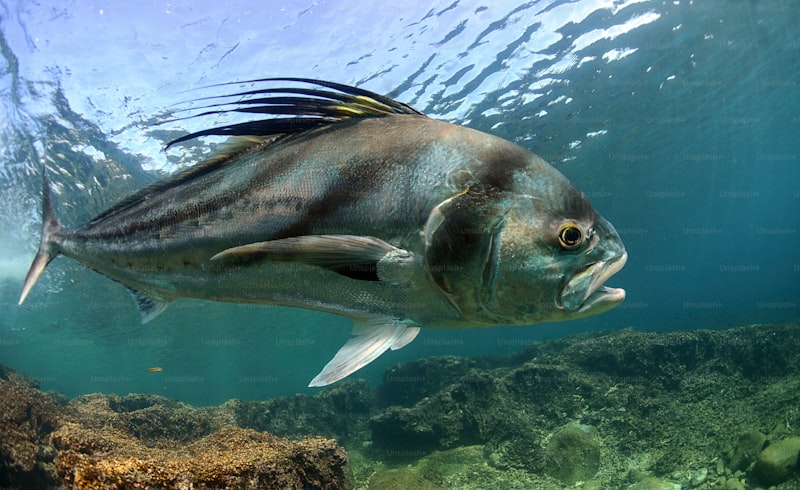Predatory fish exhibit a fascinating array of behaviors that highlight their strategic prowess in the aquatic world. From the sleek and swift barracuda to the stealthy ambush tactics of the northern pike, each species has evolved unique strategies to secure their next meal. Understanding the behavioral ecology of these predators unveils a world of adaptation and survival.
Predatory fish are characterized by their hunting techniques, which often involve a blend of patience, speed, and precision. Take the example of the tiger shark, known for its patient stalking before launching a lightning-fast attack. This hunting strategy not only conserves energy but also maximizes the chances of a successful strike.
In the realm of behavioral ecology, the habitat plays a crucial role in shaping predatory behavior. Fish like the great white shark are apex predators, occupying the top of the food chain in their marine ecosystems. Their hunting behavior is finely tuned to exploit vulnerabilities in their prey’s behavior, demonstrating a remarkable understanding of their environment.
Moreover, the social behavior of predatory fish adds another layer of complexity. Species like the piranha exhibit cooperative hunting behaviors, where they work together to overwhelm larger prey. This social cohesion enhances their hunting success and underscores the importance of communication among predators.
Metaphorically speaking, predatory fish can be likened to skilled hunters in the wilderness of the ocean, each equipped with specialized tools and techniques honed through millions of years of evolution. Their ability to adapt to changing conditions and exploit opportunities reflects their evolutionary success in diverse aquatic environments.
Understanding the behavioral ecology of predatory fish not only enriches our knowledge of marine ecosystems but also provides insights into broader ecological principles of predator-prey dynamics. It is a testament to the intricate balance of nature where every species, no matter how small or large, plays a vital role in maintaining the health and equilibrium of aquatic ecosystems.
Unveiling the Hunt: How Predatory Fish Choose Their Prey
Ever wondered how predatory fish effortlessly maneuver through murky waters, striking with deadly accuracy? The art of hunting for these aquatic predators is a finely tuned skill, honed by millions of years of evolution. Whether in the vast oceans or quiet streams, predatory fish rely on a complex set of senses and instincts to select their next meal.
One of the key strategies predatory fish employ is visual acuity. Their keen eyesight allows them to detect even the slightest movement or disturbance in the water. This acute vision helps them distinguish between potential prey and other objects in their environment. It’s akin to a sharp-eyed hawk spotting its prey from high above.
Beyond sight, predatory fish also rely heavily on their lateral line system. This network of sensitive receptors along their bodies detects subtle changes in water pressure and movement. This sensory ability is crucial for detecting the presence and location of prey, even in low visibility conditions. It’s like having a built-in radar system that guides them towards unsuspecting prey.
Once a potential meal is identified, predatory fish spring into action with impressive speed and agility. Whether it’s a sudden burst of acceleration or a stealthy approach from below, their predatory tactics are finely tuned to maximize the element of surprise. Imagine a skilled archer releasing an arrow with pinpoint accuracy – predatory fish strike with similar precision and efficiency.
Furthermore, their decision-making process isn’t just about reacting to immediate stimuli. Predatory fish also exhibit learned behavior and adapt their hunting strategies based on past experiences. This adaptive intelligence allows them to overcome challenges such as evasive prey or changing environmental conditions. It’s like a seasoned detective piecing together clues to solve a complex case.
In essence, the art of how predatory fish choose their prey is a testament to nature’s remarkable engineering. From acute senses to swift reflexes and adaptive strategies, these aquatic hunters embody the perfect blend of instinct and intelligence. So next time you observe a predator in action, marvel at the intricacies of its hunting prowess – a true spectacle of evolution in motion.
Mastering the Art of Ambush: Tactics of Predatory Fish Revealed
Imagine yourself beneath the surface of a serene lake, where beneath the tranquil waters, a hidden world of cunning predators unfolds. Predatory fish, masters of ambush tactics, have honed their skills over millennia, adapting to their environments with precision and stealth. Understanding these creatures and their methods unveils a thrilling world where survival hinges on swift and calculated actions.
Predatory fish are nature’s ultimate strategists. They utilize a variety of ambush techniques to secure their next meal. One of the most common tactics involves camouflage. These predators blend seamlessly into their surroundings, whether among reeds, rocks, or the sandy bottom of a riverbed. Their ability to remain virtually invisible until the perfect moment to strike is a testament to their evolutionary prowess.
Timing is critical in the predatory fish’s world. They patiently await the ideal opportunity, conserving energy until an unsuspecting prey ventures too close. Like skilled hunters, they exhibit patience, waiting for the precise moment when success is virtually guaranteed. This calculated approach minimizes the risk of failure and maximizes their chances of a successful hunt.
Another fascinating strategy employed by predatory fish is the use of lures. Some species have developed appendages that mimic prey, enticing curious victims into striking distance. These lures are often adorned with vibrant colors or patterns that evoke a sense of vulnerability or opportunity, effectively deceiving even the most cautious prey.
Furthermore, predatory fish are adept at using their environment to their advantage. They navigate through complex underwater terrain, using obstacles to create barriers or ambush points. By leveraging natural features such as currents or vegetation, these creatures enhance their hunting efficiency, ensuring a higher likelihood of capturing their target.
The world of predatory fish is a testament to the ingenuity of nature. Their mastery of ambush tactics is a blend of patience, camouflage, and strategic positioning. By studying these remarkable creatures, we gain insight into the delicate balance of predator and prey that shapes aquatic ecosystems worldwide.
From Solitary Stalkers to Pack Hunters: Social Behavior Among Predatory Fish
Predatory fish, ranging from the iconic solitary shark to the formidable wolf pack of orcas, exhibit a diverse array of social behaviors that captivate marine biologists worldwide. These fascinating creatures, often perceived as solitary stalkers in popular culture, actually engage in complex social interactions that rival those of land-based mammals.
Take the example of the orca, also known as the killer whale. While renowned for their hunting prowess as apex predators, orcas are remarkably social animals. They live in tightly-knit matrilineal pods where females lead and males remain with their mothers for life. Within these pods, orcas cooperate during hunts, displaying a sophisticated division of labor and communication through vocalizations and body language.
Similarly, sharks, despite their reputation as lone hunters, sometimes exhibit social behaviors. Some species, like the hammerhead shark, form schools during migrations or around abundant food sources. These schools provide safety in numbers and opportunities for cooperative hunting, demonstrating a balance between solitary hunting and social aggregation.
The shift from solitary to social behavior among predatory fish underscores their adaptive flexibility in response to ecological pressures. Social interactions among these creatures facilitate learning, communication, and even cultural transmission of knowledge, such as hunting strategies and migratory routes.
Understanding the intricacies of social behavior in predatory fish not only enriches our knowledge of marine ecosystems but also challenges our perception of these animals as mere solitary hunters. They are dynamic creatures that navigate a complex social landscape beneath the waves, where cooperation and group dynamics play crucial roles in their survival and success.
This article aims to convey the intriguing social dynamics of predatory fish in a conversational yet informative manner, highlighting their behavioral adaptations and ecological significance.
The Evolutionary Puzzle: Why Predatory Fish Prefer Certain Prey Species

Predatory fish, such as pike and bass, aren’t just mindlessly devouring whatever swims by. They’ve evolved sophisticated preferences over millennia of natural selection. It’s a bit like how we humans develop preferences for certain foods based on taste and nutrition, except for these underwater predators, it’s all about survival.
One of the key factors driving this preference is energy efficiency. Predatory fish are strategic hunters, aiming to maximize the energy gained from their meals while minimizing the energy spent chasing them. Think of it like a predator going for the biggest bang for its buck – or in this case, the biggest meal for its energy expenditure.
Another piece of the puzzle lies in adaptation and specialization. Over time, predatory fish have adapted to capitalize on the vulnerabilities of specific prey species. It’s like a game of evolutionary chess, where each move (or adaptation) by the prey prompts a counter-move (or adaptation) by the predator. This evolutionary dance has led to a sort of co-evolutionary arms race, where both predator and prey continually adapt to gain the upper hand.
But it’s not just about physical traits. Predatory fish also factor in the behavior and habitat of their prey. Some prey species might be more active during certain times of day or in specific environmental conditions. This knowledge allows predators to optimize their hunting strategies, lurking in the right place at the right time for a successful ambush.
Interestingly, there are also chemical cues at play. Predatory fish can detect chemical signals released by potential prey, guiding them towards their next meal. It’s like following a trail of breadcrumbs – except these breadcrumbs lead to a tasty fish instead of a gingerbread house.
Undercover Predators: How Camouflage Aids Predatory Fish in Hunting
Imagine you’re a small fish, peacefully swimming along the coral reef. Everything seems calm and colorful, but unbeknownst to you, a master of disguise is lurking nearby. Predatory fish like groupers and lionfish have perfected the art of camouflage to blend seamlessly into their surroundings. They don’t just swim; they blend in like aquatic ninjas, waiting for the perfect moment to strike.
Camouflage isn’t just about colors; it’s a survival strategy. These predators use a combination of color patterns, textures, and even behaviors to mimic their environment. For example, a grouper might have speckled patterns that resemble the rocks or corals it hides among. Meanwhile, a lionfish’s feathery fins mimic the swaying movements of seaweed.
But why bother with all this effort? It’s all about the element of surprise. By blending in, these predators become virtually invisible to their prey. Small fish or crustaceans swimming by might not notice the lurking danger until it’s too late. It’s like trying to spot a spy in a crowd wearing perfect camouflage.
Nature has equipped these predators with specialized adaptations that enhance their hunting prowess. Their keen eyesight allows them to detect even subtle movements of potential prey. Once they’ve spotted a target, their camouflage helps them get closer without raising suspicion. It’s like a hunter wearing the perfect disguise to get within striking distance without being noticed.
Moreover, camouflage isn’t just a static feature; it’s dynamic. Some fish can change their colors or patterns to match different backgrounds. It’s like having a wardrobe of invisibility cloaks, each suited to a different environment. This ability to adapt their camouflage makes these predators even more effective hunters in diverse habitats.
Nighttime Hunters: Exploring Nocturnal Behavior in Predatory Fish
When the moon rises and shadows lengthen, predatory fish like barracudas, groupers, and eels emerge from their daytime hiding spots. Their senses keen, they prowl silently through the water, eyes glinting with the anticipation of a hunt. Unlike their diurnal counterparts, these nocturnal predators rely less on vision and more on other senses heightened in the cover of darkness.
Picture this: a sleek barracuda, its silver scales shimmering under moonlight, gliding through the reef like a phantom. It moves with grace, fins cutting through the water effortlessly, as it searches for unsuspecting prey. The darkness gives it an advantage – prey fish often can’t see the danger approaching until it’s too late.
Groupers, on the other hand, are ambush predators. Patiently lurking in crevices or under ledges during the day, they wait until nightfall to strike. Their method is simple yet effective: wait until a fish swims too close, then lunge with lightning speed to engulf it in their massive jaws.
For eels, the night offers opportunities to hunt in ways impossible during the day. Their sinuous bodies allow them to slip into crevices and holes where prey seeks refuge, striking with precision using their sharp teeth and powerful jaws.
What drives these predators to hunt at night? Some scientists suggest it’s to avoid competition with other diurnal predators, while others believe it’s to capitalize on the darkness that conceals them from larger predators.
The Role of Intelligence: Problem-Solving Abilities in Predatory Fish

One notable example of problem-solving in predatory fish is their ability to recognize patterns in prey behavior and adapt their hunting techniques accordingly. For instance, species like the barracuda are known for their swift and precise attacks, utilizing a combination of speed and acute sensory perception to ambush fast-moving targets. This predatory strategy requires not only physical prowess but also a high level of cognitive flexibility to adjust to changing circumstances.
Moreover, intelligence in predatory fish extends beyond mere hunting tactics. Studies have shown that some species exhibit complex social behaviors and hierarchical structures within their groups, indicating a sophisticated understanding of social dynamics and cooperation. This level of intelligence allows them to coordinate group hunting efforts effectively, maximizing their chances of success while minimizing risk.
Furthermore, the ability of predatory fish to learn from experience is a testament to their cognitive abilities. They can remember successful hunting grounds, avoid previously encountered dangers, and even recognize individual prey items based on past encounters. This adaptability enhances their efficiency as predators and contributes to their overall survival in competitive aquatic ecosystems.
The role of intelligence in predatory fish is multifaceted and essential to their existence. It enables them to navigate complex environments, solve intricate problems related to hunting and survival, and adapt to changing conditions over time. By leveraging their cognitive abilities, these remarkable creatures continue to fascinate researchers and enthusiasts alike with their prowess in the art of predation.
Frequently Asked Questions
What are the key hunting strategies of predatory fish
Learn about the essential hunting strategies used by predatory fish in their natural habitats. Discover how these strategies enable them to effectively locate, pursue, and capture prey, adapting to different environmental conditions for successful hunting.
What role does habitat play in the behavior of predatory fish
This FAQ provides a concise explanation of how habitat influences the behavior of predatory fish. It explores how different habitats shape hunting strategies, feeding patterns, and social behaviors among predatory species.
How do predatory fish select their prey
This FAQ description explains how predatory fish select their prey. It covers the factors that influence their choice, such as size, movement patterns, and visibility. Understanding these factors helps in comprehending the predatory behavior of fish in different aquatic environments.
What factors influence the social behavior of predatory fish
Factors influencing the social behavior of predatory fish include habitat structure, availability of food, competition for resources, reproductive needs, and predator-prey interactions. These factors shape how predatory fish interact with each other and their environment.
How do predatory fish communicate during hunting
Learn how predatory fish communicate during hunting to coordinate attacks and increase hunting success. Understand the methods they use to signal and coordinate with each other underwater.



